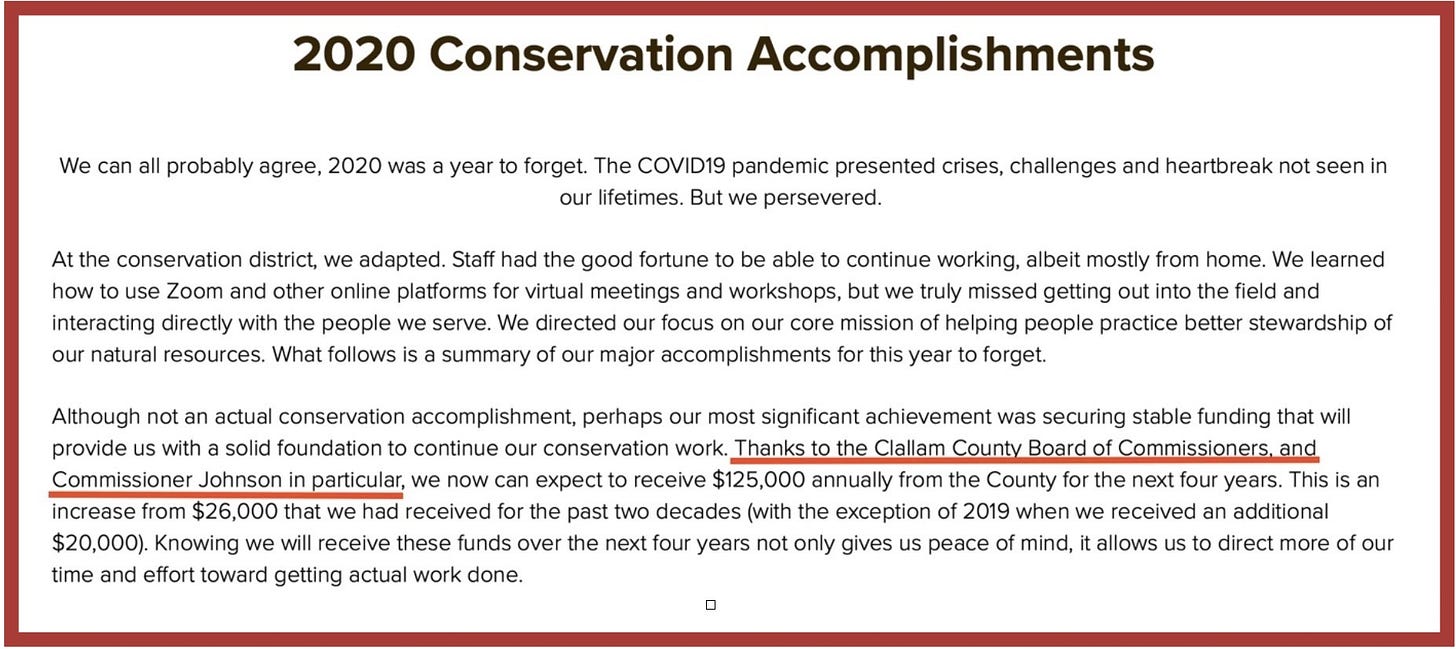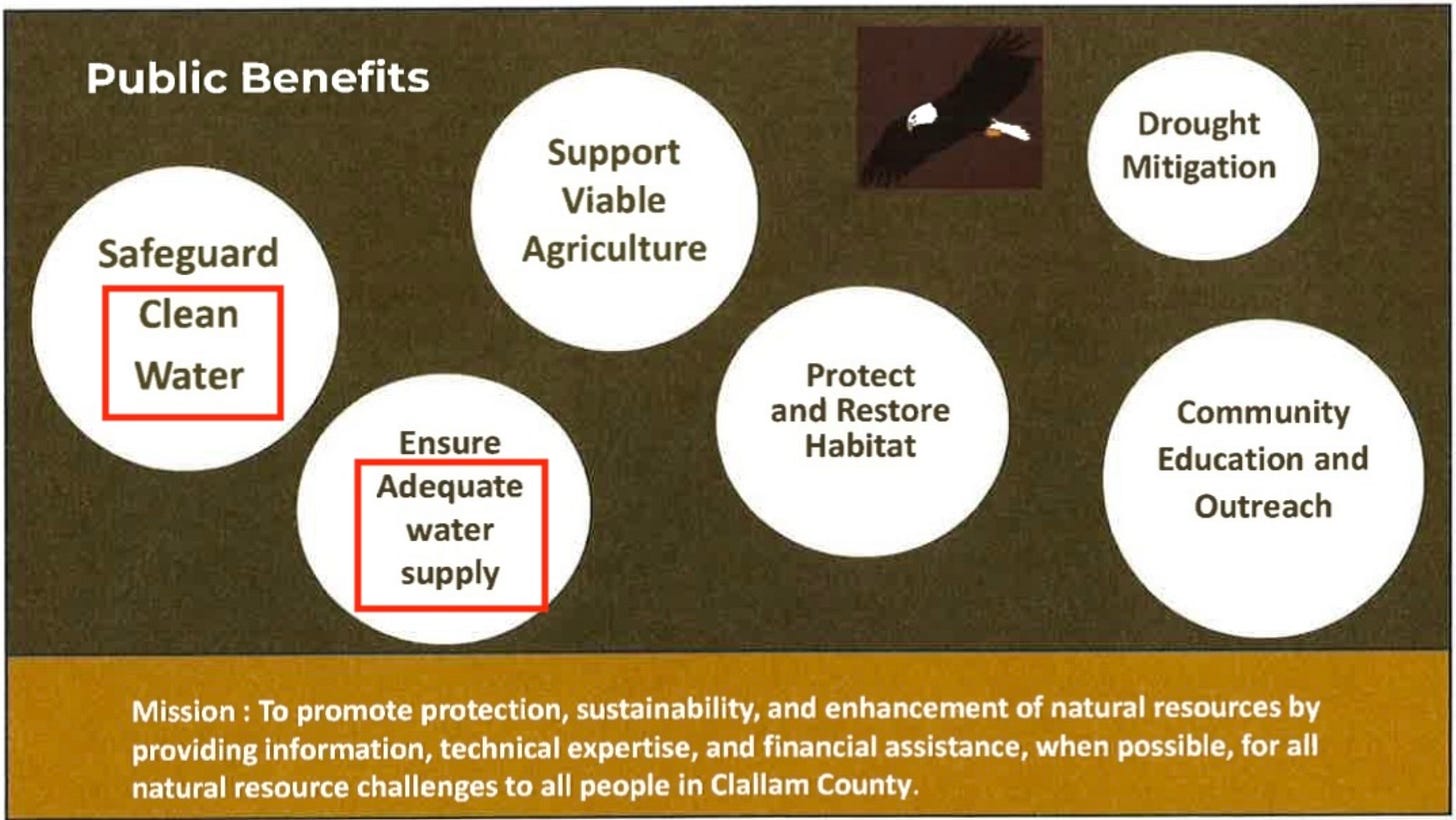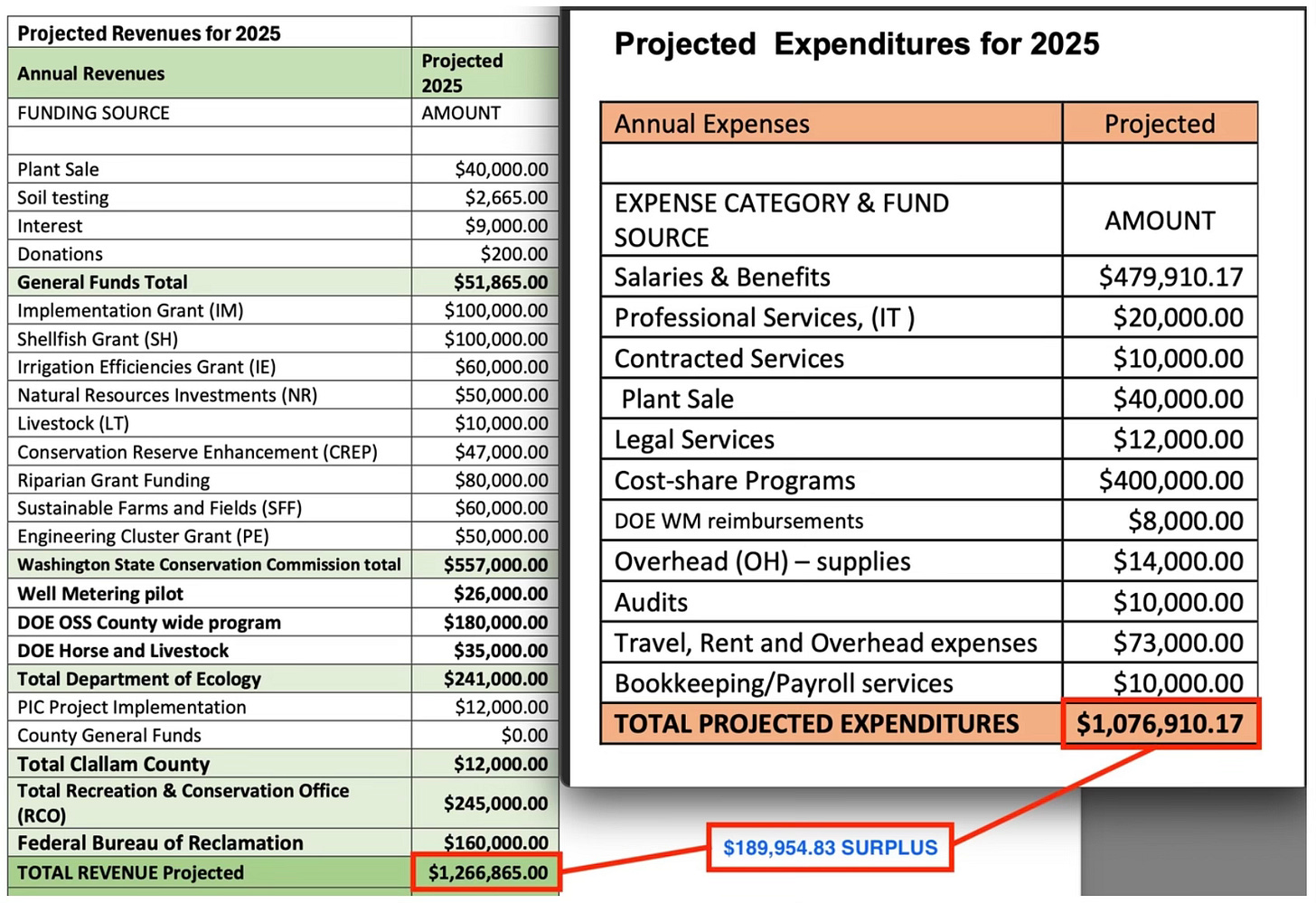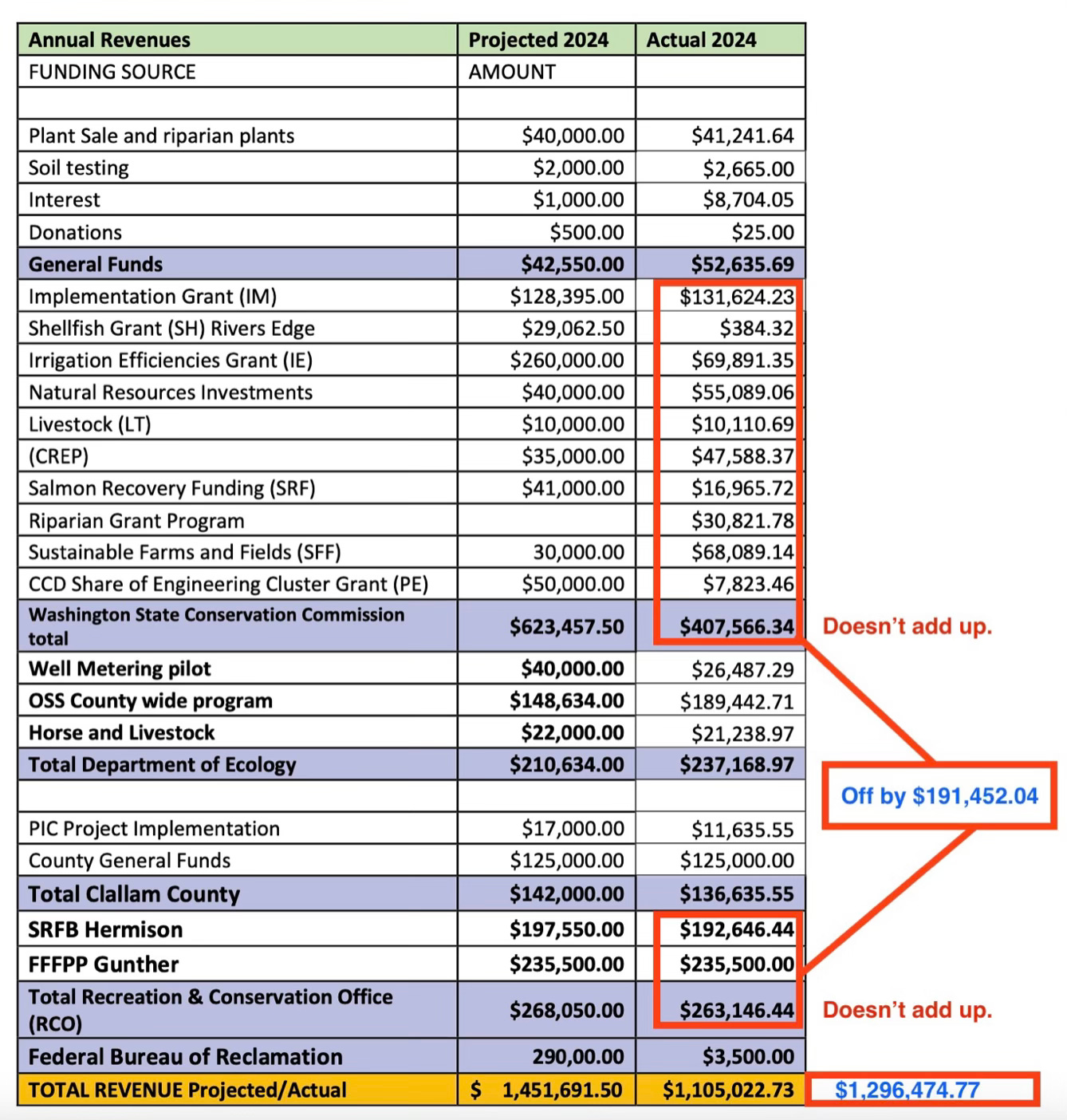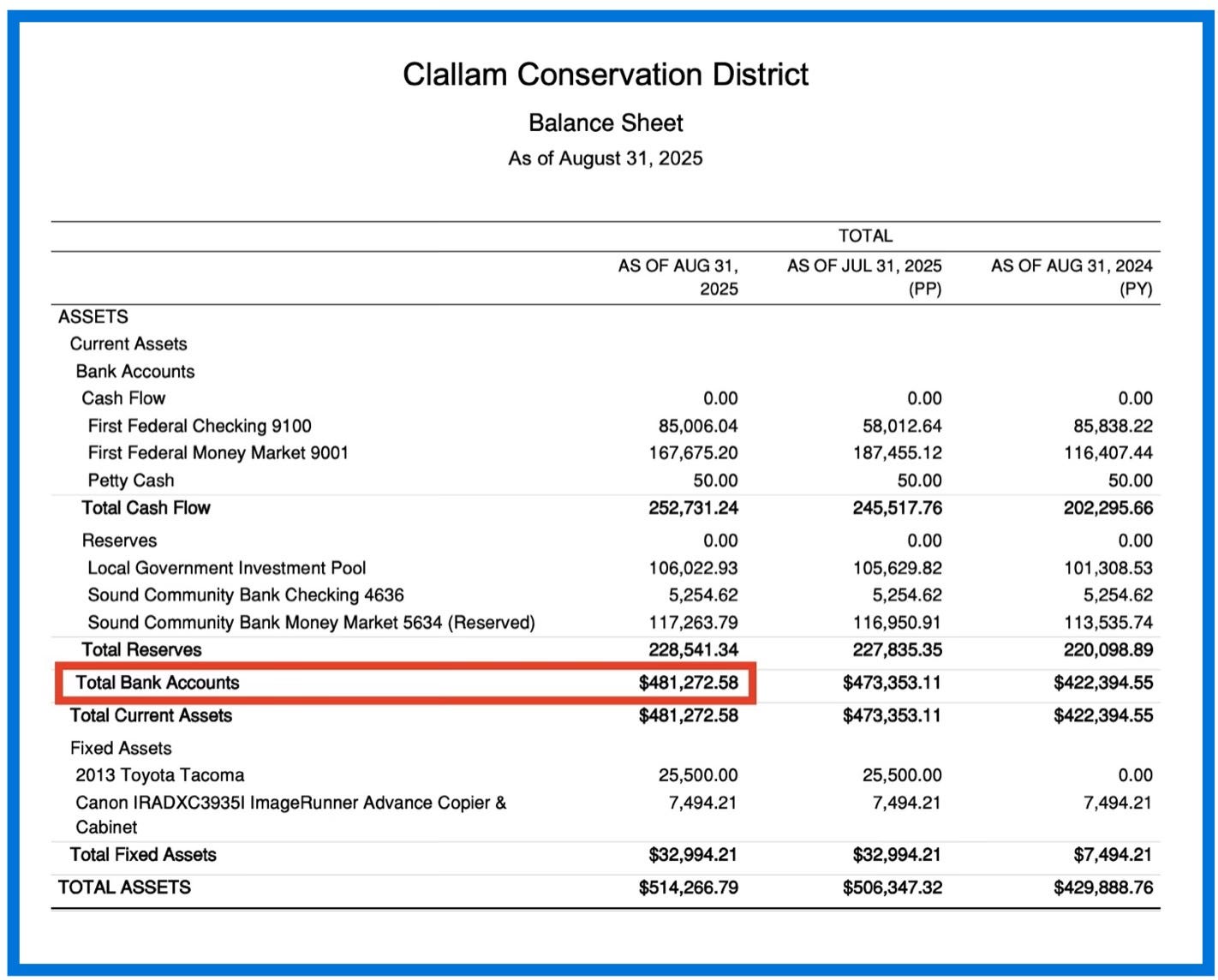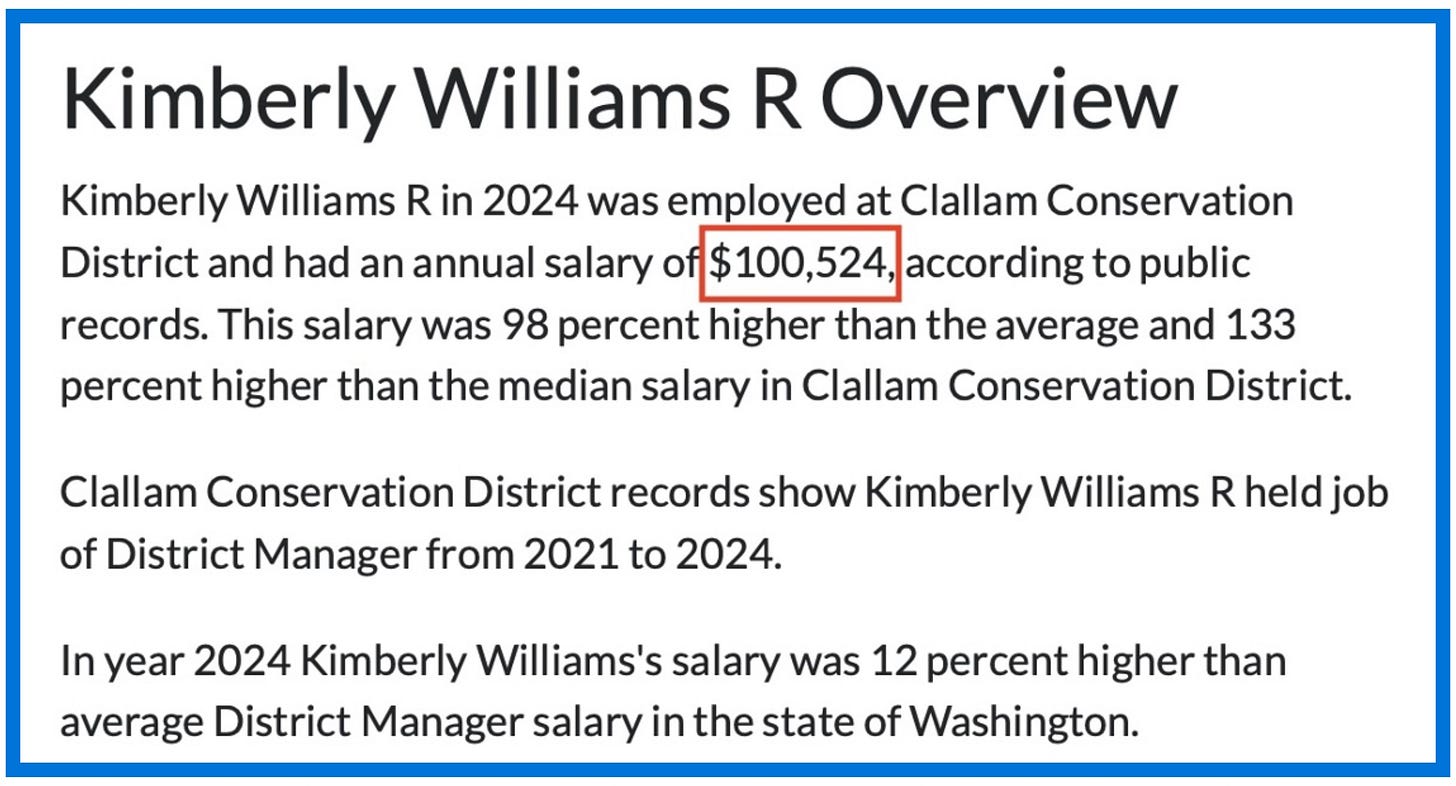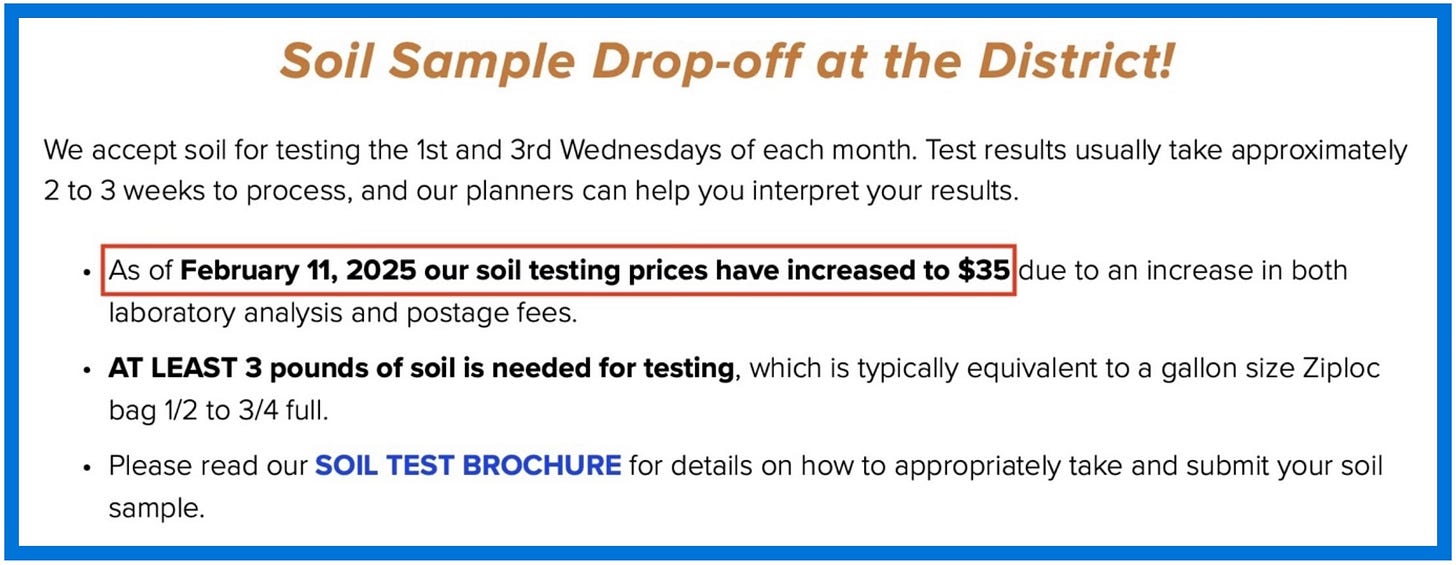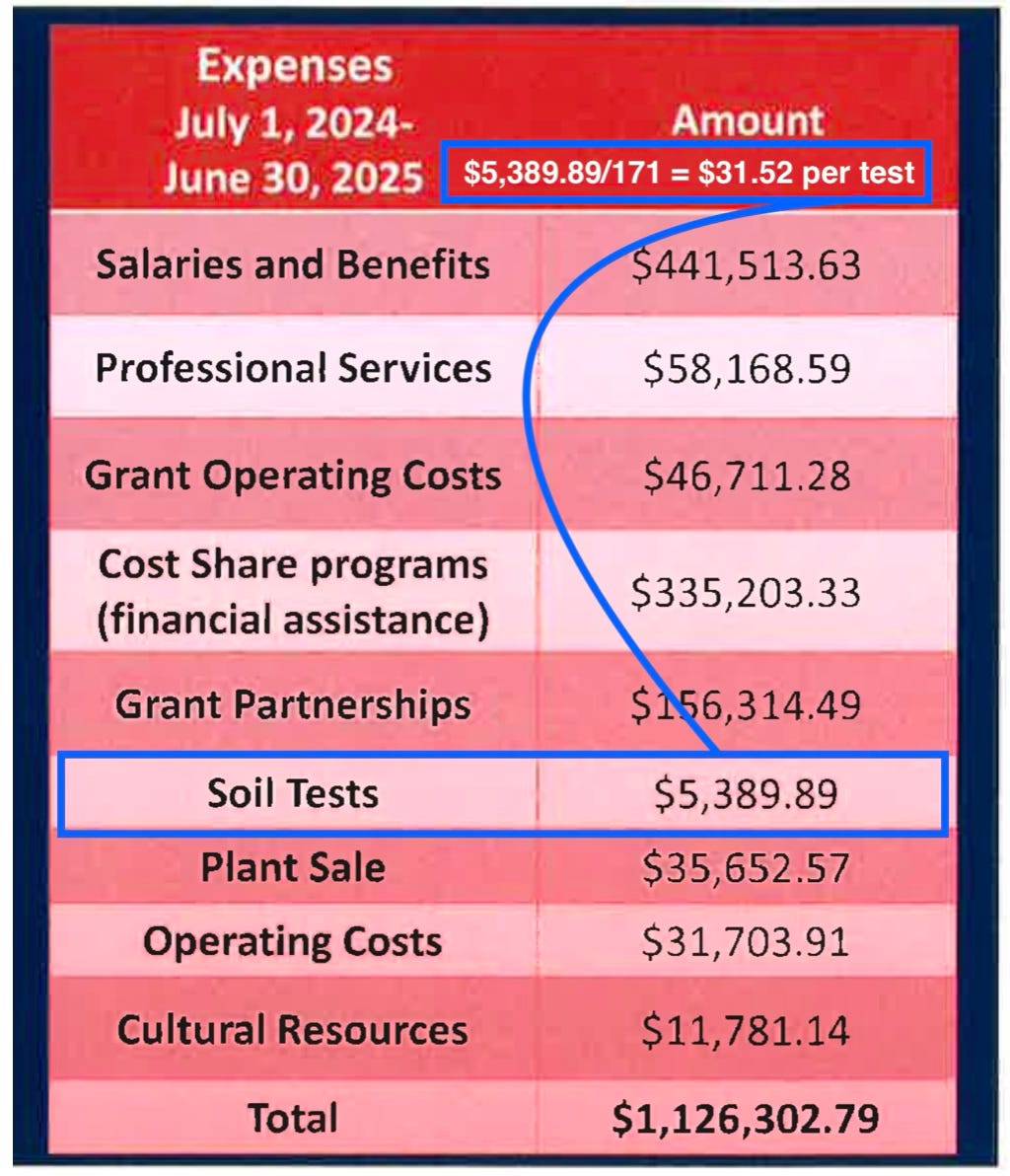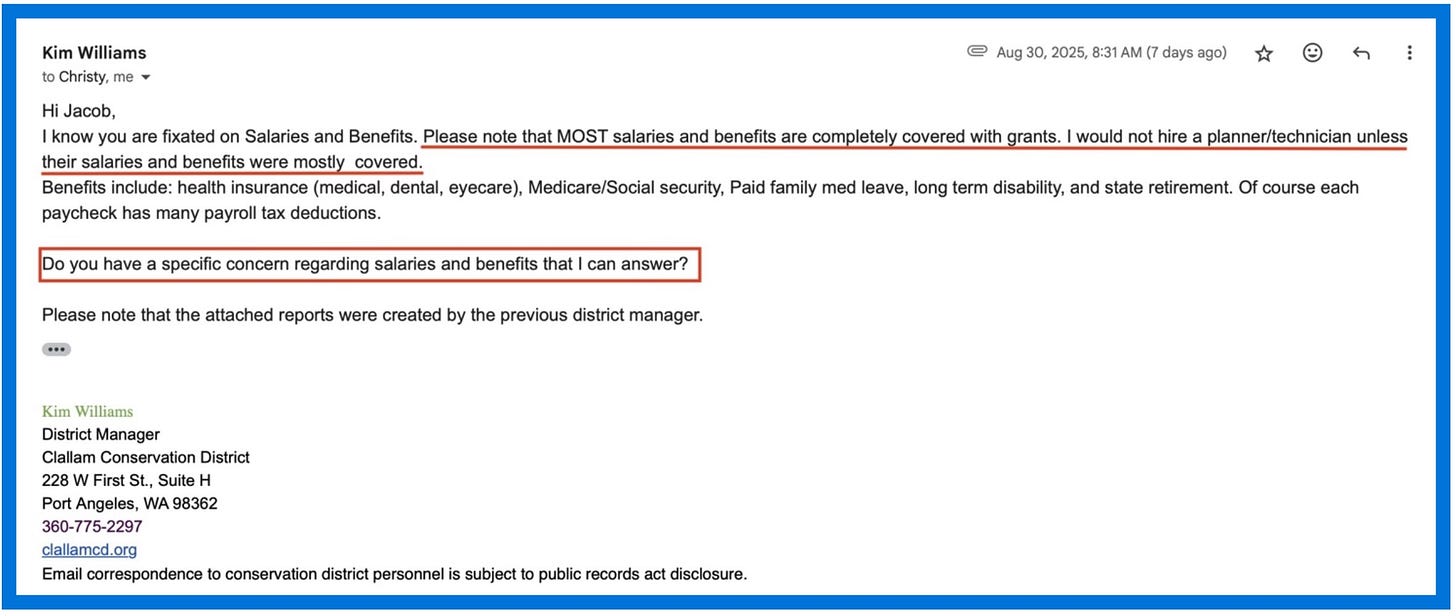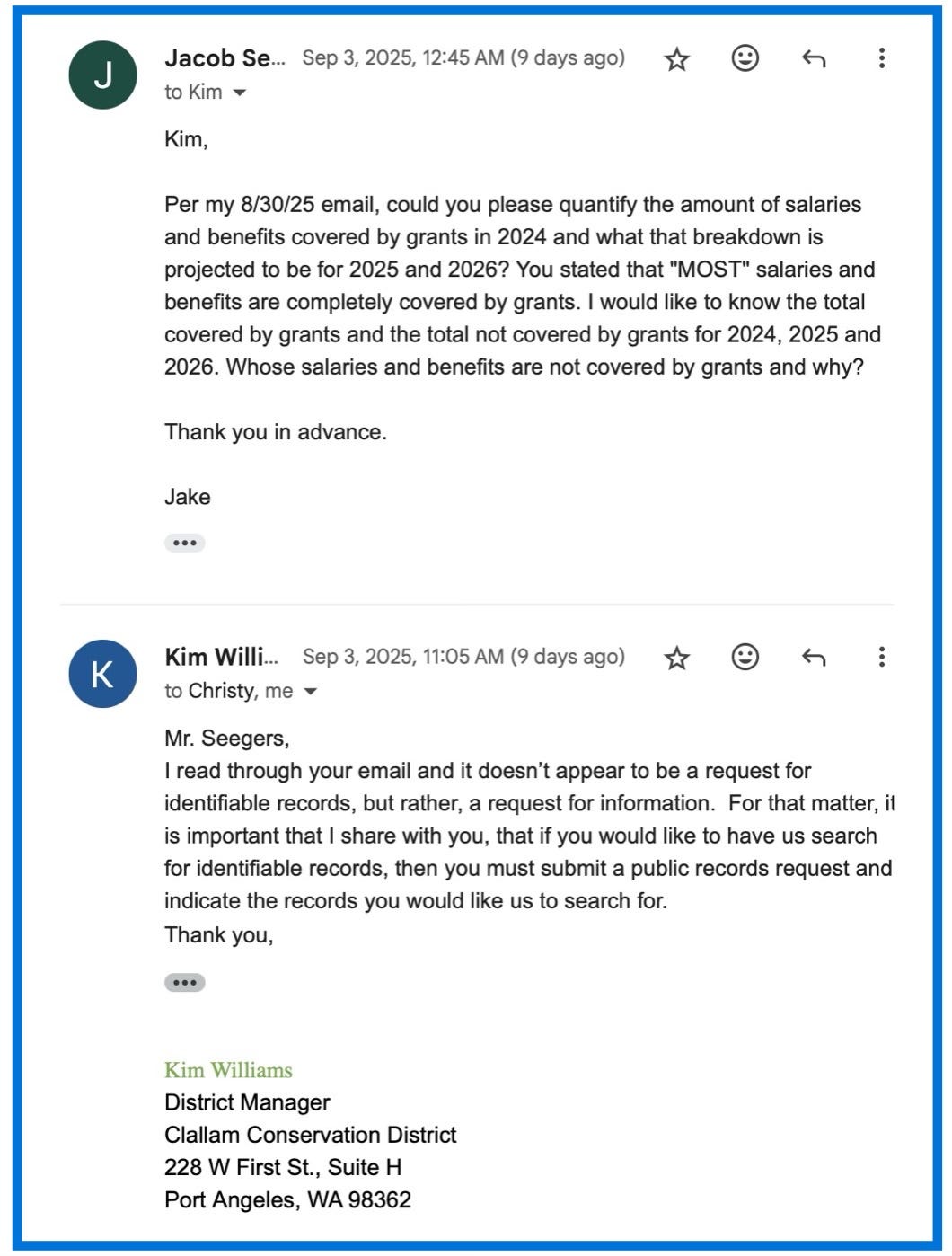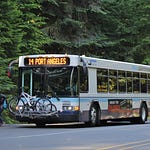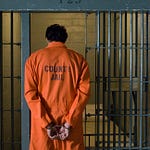Guest contributor Jake Seegers shows how county taxpayers have already poured $625,000 into the Clallam Conservation District without a shred of measurable proof that it delivers results. Now, the district claims it faces a funding “crisis”—despite half a million in reserves, self-sustaining programs, and grant-funded payroll. Commissioners are echoing CCD’s talking points while ignoring math errors, inflated projections, and citizen opposition, all to push through a mandatory $5 parcel fee. This isn’t conservation—it’s fiscal theater, and taxpayers are the ones left paying for the performance.
By Jake Seegers, guest contributor
Strong managerial judgment often falters when profits are high. With abundant cash, disciplined spending can give way to ego-driven expansion. This leads to poorly timed acquisitions that are later reversed or devalued when financial pressure returns. Time Warner and AOL. News Corp and Myspace. Clallam County and the Clallam Conservation District.
In 2019, during a budget surplus, the commissioners committed $125,000 annually from the county’s general fund to provide CCD with “stable funding.” Over five years, taxpayers spent $625,000 and commissioners did not require metrics of CCD’s claimed benefits. Now, the board intends to spin this burden off onto taxpayers with a mandated $5 parcel fee—and you don’t get a vote.
Friends in High Places
At the September 2nd public hearing, 20 citizens spoke in opposition to CCD’s parcel fee proposal. Their concerns fell on the commissioners’ deaf ears. The lone supporting comment was the only one that seemed to register with the commissioners.
Why the disconnect?
Commissioner Randy Johnson has been CCD’s most consistent champion since 2019, when he orchestrated a near 500% increase in CCD’s county funding. He has described himself as “gungho” for CCD and has consistently praised the district.
Commissioner Mark Ozias prioritized the county’s Comprehensive Plan over the expressed will of citizens, saying: “The Conservation District…has a suite of responsibilities that are reinforced and specifically called out in our Comprehensive Plan. I favor providing the type of support that rates and charges could provide.”
He repeated this sentiment in a recent email.

Commissioner Mike French simply echoed CCD’s own messaging: “The most essential need that humans have is water. Clean and available water. So, to have a public entity that is just a resource to make sure that we have clean and available water…should that exist? My answer is yes.”
Missing Measurements
Commissioners have applauded CCD for its claims of safeguarding clean water, ensuring adequate water supply, supporting viable agriculture, protecting habitat, and mitigating drought.
But CCD fails to corroborate its asserted value. Instead of measuring outcomes, CCD provides activity counts: trees planted, soil tests processed, pounds of seed distributed, grants received, and outreach numbers. These are inputs—not results.
Where are the water quality improvements? Where are the reports on increased crop yields, cleaner streams, or healthier fish runs? During Commissioner Johnson’s five-year commitment to the Clallam Conservation District — a subsidy that cost taxpayers $625,000 — no proof was requested, and none was delivered.
This failure undermines taxpayer confidence that any parcel fee would be tied to real, measurable outcomes.
Still, at the September 2nd parcel fee hearing, Commissioners Johnson and French put on their firmest faces and demanded measures of success – including charts and graphs.
CCD was quick to adjust its reporting requirements to really measure something – “when available”. That standard would not pass in any other line of business.
During CCD’s September 9th board meeting, a board member indicated that the new resolution had satisfied the commissioner’s demands for more accountability measures, as confirmed by an email from Commissioner Ozias. That may explain why the owner of Lazy J Tree farm was already congratulating the CCD board for the approval of their $5 parcel fee resolution.
If commissioners do, in fact, approve this parcel fee, can Clallam taxpayers claim that funds in their bank accounts are not “available” when CCD places a lien on their properties for non-payment?
Faking a Fiscal Fever
Commissioners continue to endorse CCD’s stated benefits, despite the district’s unwillingness—and apparent inability—to substantiate those claims with defensible metrics.
Now, CCD insists it faces a funding crisis. The data suggest otherwise. CCD projects a $189,955 surplus in 2025.
CCD also operated at a $169,487 surplus in 2024 — and that figure does not even include the final $125,000 transfer from the county’s general fund, committed by Commissioners Johnson and Ozias.
*NOTE: CCD’s 2024 Annual Accomplishments Report contains $191,452 in math errors related to its calculation of “Actual 2024” revenues. These errors have been corrected to arrive at CCD’s actual 2024 surplus of $169,487. The 2023 Annual Accomplishments Report contains similar errors.
Clallam Conservation District’s bank account balances as of August 31st, 2025, totaled $481,272.58. These are not signs of a district in financial crisis.
Yet at CCD’s Parcel Fee Hearing on July 25, 2025, Director Kim Williams asserted that the district faces a $125,000 funding gap (hear it at 00:40:00). Only one month later, that figure swelled to $214,526, without a clear explanation.
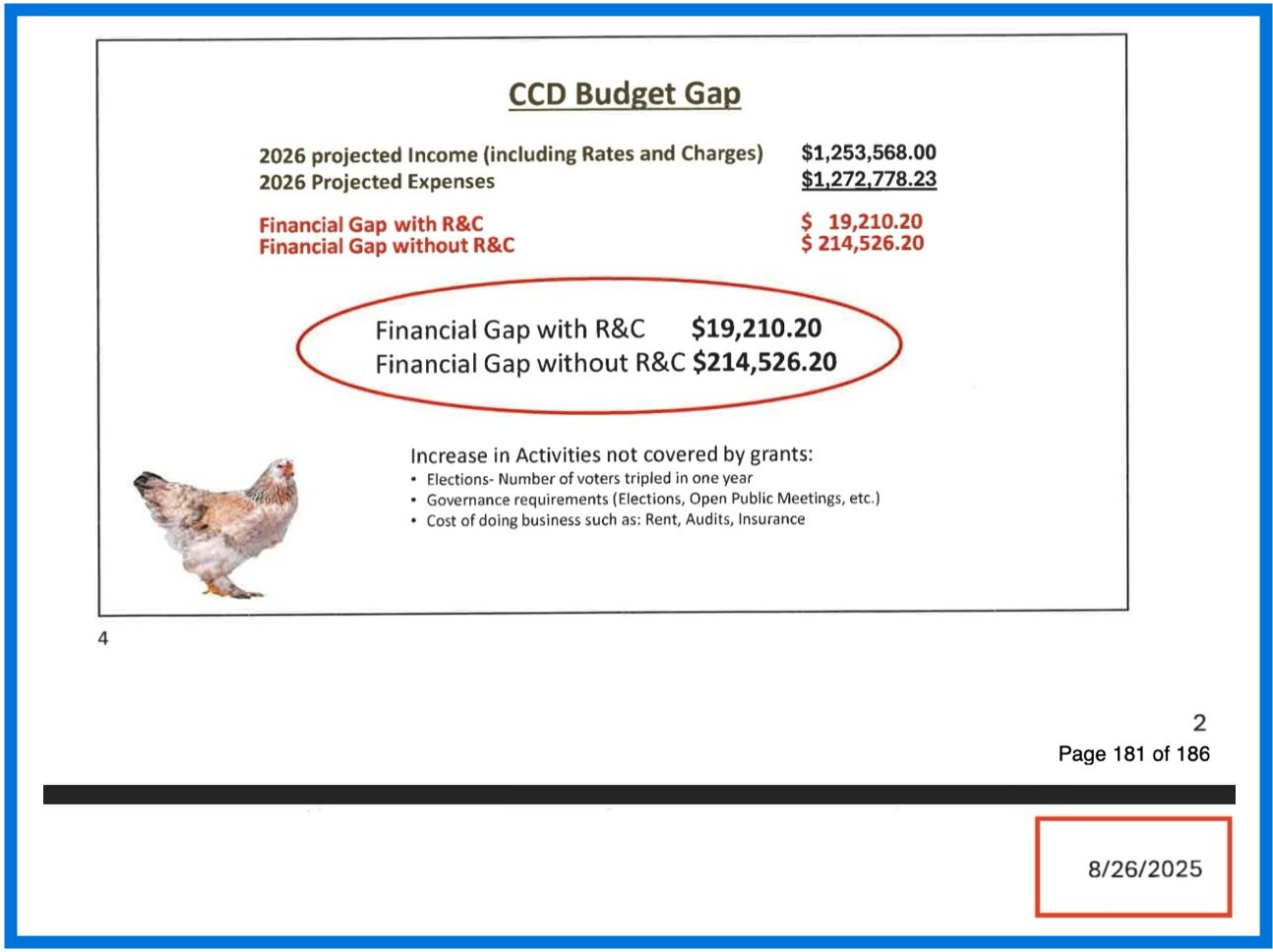
Fabricated Gaps and Flawed Math
The so-called “funding gap,” CCD argues, stems from declining grant revenue. While Director Williams projects a $131,552 increase in support from the Washington State Conservation Commission, she simultaneously assumes a $340,000 reduction in other grants. Some federal programs indeed face pressure in 2026, but there is no evidence that the Department of Ecology's On-Site Septic grants or the Recreation and Conservation Office (RCO) grants are being reduced. In fact, both programs appear stable, undermining CCD’s narrative of an unavoidable shortfall.
As of July 8th, CCD had recently filed for $1.85 million in additional grant funding. If successful, the district’s actual 2026 revenue may be substantially higher than current projections.
CCD amplifies the “funding gap” by increasing staff hours in 2026—a questionable move if funding is indeed shrinking.
A math error in CCD’s calculations also compounds the alleged “gap”.
In a series of email exchanges, Director Williams attributed CCD’s $100,000+ increase in salaries and benefits from 2025 to 2026 to expanded staff hours and a cost-of-living adjustment (COLA). She claimed that a 3% COLA would raise wages by $6 per hour and cost the district $47,958 in 2026.
Yet CCD’s internal payroll projections show 2026 wages of $294,650 before the COLA. A 3% adjustment on that base equals $8,839.50—not $47,958. This represents a $39,118 miscalculation. One hopes the district would have caught such an error before it translated into payroll overpayments.
This is not the only time that Director Williams’ financial claims have failed to add up. Her name appears on both the 2024 and 2023 Annual Accomplishments Reports referenced earlier, each containing significant errors.
Additionally, at the September 2nd hearing, Williams stated that her salary was “not six figures. It’s much lower than that.” (Listen at 2:00:52). Yet, her own reporting (shown above) shows wages of $88,865.28. Any financial component to William’s $50,000 benefits package (paid time off, vehicle allowance, bonus structure, etc) could easily nudge her compensation into the six-figures.
Perhaps this explains why govsalaries.com reports her salary at $100,524.
Moreover, if Williams’ $6/hour COLA blunder is left uncorrected, her salary will climb by $10,752 in 2026.
One thing is clear: while the county faces a legitimate fiscal emergency, CCD is fabricating and miscalculating one. And our commissioners are buying it.
Chopping Block Theater
CCD insists services like soil testing and the native plant sale are “on the chopping block” without approval of the $5 parcel fee.
The numbers tell a different story:
Soil Testing: CCD charges $35 per test.
For the 12 months ending June 30th, 2025, expenses of $5,389.89 were reported for 171 soil tests – that’s an average $31.52 per test, leaving a margin of profit.
Native Plant Sale: Net profit was nearly $12,000 during the same period.
These programs pay for themselves.
Meanwhile, overhead costs of $81,000 in 2026 , like “rent” and “keeping the lights on”, are easily covered by allowable grant allocations. Salaries and benefits also seem to be safe without the proposed parcel fee. Williams herself admitted in an email: “Please note that MOST salaries and benefits are completely covered with grants.”
Emails citing my “specific concern” and asking the director to define “MOST” for 2024, 2025, and 2026 remain unanswered.
But CCD’s own records already provide an answer. For 2025, grant funding covers $693,045 in salary and benefit awards and $169,001 in overhead costs—totals that far exceed CCD’s expense projections for these same categories. [Note: “S&B is Salary and Benefits, “OH” is Overhead.]
Slamming the Gap Shut
CCD has pleaded that the proposed parcel fee is critical to bridge its self-proclaimed gap in funding. CCD’s last line of defense in this claim is that grants do not fund grant writing, presentations, or elections.
These claims are disingenuous at best. The majority of CCD’s funding has come from the same grants since 2020. How much grant-writing time is really required to reapply for the same grant? Copy. Paste. Submit. Repeat.
And here lies the deeper contradiction: some Washington State Conservation Commission grants allow reimbursement for grant-writing. In fact, CCD’s own August 2025 Staff Activities Report references the State Conservation Commission Implementation Grant (SCC IM) not only for routine proposals but even for work related to its current Rates and Charges campaign.
During CCD’s September 9th board meeting, Ms. Williams confirmed that the SCC Implementation grant can reimburse grant writing and presentations. She has yet to respond to emails requesting exact numbers.
But, here’s the real kicker: Any grant-writing that is not grant-funded is bankrolled by “stable funding”. This raises a troubling possibility: the $60,000 general fund allocation provided by commissioners in 2025 may have subsidized CCD’s own efforts to impose a $5 parcel fee on county residents. The commissioners are literally using taxpayer money to finance efforts to tax citizens further!
Finally, CCD claims it needs $30,000 for elections in 2026. Yet in 2025, total election, printing, and postage costs were $8,100. Staff reported devoting 200 hours to election-related work, which—at an average rate of $36.35 per hour—totals $7,270. Taken together, actual election costs are closer to $15,000, roughly half of CCD’s 2026 estimate.
NOTE: The reported $8,100 in expenses for 2025—broken down as $600 for postage, $1,500 for legal ads, elections, and RFQs, and $6,000 for marketing and printing—was not exclusively tied to elections. That figure also includes the costs of newsletters and postcards. This means that actual election costs were likely below the $15,000 estimate referenced earlier.
Moreover, during CCD’s September 9, 2025, board meeting, it was noted that many conservation districts “use rates and charges or the implementation grant, which is very flexible”, to cover election expenses.
The Dead Credo
CCD’s long-standing mantra has been its need for “stable funding.” But with fabricated and miscalculated shortfalls, self-sustaining programs, grant-funded payroll and overhead, reimbursable grant writing, and half a million dollars in reserves, that mantra has lost all credibility.
Even more troubling, the county commissioners continue to mirror CCD’s talking points instead of scrutinizing the district’s claims and math—which are full of inconsistencies, misleading projections, arithmetic errors and outright deception. By accepting CCD’s narrative wholesale, commissioners are prepared to mandate $200,000 in annual taxpayer obligations for an agency that has not proven its need, accountability, or authenticity.
Rather than listening to the voices of the people, commissioners are hiding behind theatrical demands for “metrics” and a “sunset clause” that will protect taxpayers only after draining them of $2 million in mandatory payments to CCD.
If this is the standard of oversight applied to the county’s general budget, then perhaps it is time to consider spinning off more than just obligations—it may be time to spin off the commissioners responsible for them.
Call to action
But talk alone won’t stop this tax grab. Clallam residents still have a chance to make their voices heard. You can email all three commissioners directly through the Clerk of the Board at loni.gores@clallamcountywa.gov—demand accountability, measurable results, and an end to manufactured “funding crises.”
Better yet, join your neighbors in action:
📍 Drive-Thru Petition Signing
Saturday, Sept. 20, 10 a.m.–4 p.m.
1052 Jamestown Road, Sequim
Bring your family, sign the petition, and meet organizer Jake Seegers and the CC Watchdog team.
✉️ Mail Your Petition
Download the 15-line form, gather signatures, and mail to:
Jake Seegers, 69 S. Point Rd, Port Angeles, WA 98363
Be sure to postmark by Sept. 18 so petitions arrive before the commissioners’ vote.
🗓 Pack the Hearing Room
The final vote is set for Tuesday, Sept. 23 at 10:00 a.m. Let’s fill the chambers and remind commissioners that taxpayers—not special interests—deserve to be heard.
This isn’t just about a $5 fee. It’s about holding leaders accountable, demanding transparency, and protecting every property owner in Clallam County.
Last Sunday, readers were asked if county government should require clear performance metrics before creating new taxes or fees to fund agencies like the CCD. Of 192 votes:
98% said, “Yes, always”
2% said, “Sometimes, depending on the issue”
No one said, “No, trust in stated the goals is enough”



